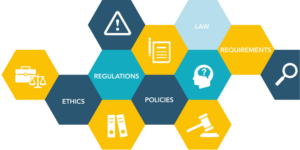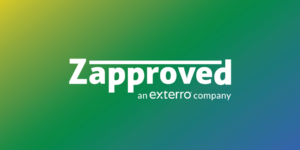
“Help me, automation, you’re my only hope!” Sometimes, it really feels that way.
I’ve been having a lot of year-in-review conversations over the past few weeks, and the number-one challenge that’s surfaced is the sweeping effect of turnover. If you work with people, have people on your team, or are a person, chances are you’ve had some extra stress and complications in your life due to turnover-related change.
As we’ll discuss, such changes can have a dramatic impact on ediscovery processes and outcomes. But this evolving context also provides opportunities to grow in important capabilities, especially around automation. Before we get there, though, let’s take a closer look at exactly what changes are taking place and why they can be so disruptive to ediscovery workflows.
What Are the Causes of So Much Employee Change?
A global pandemic, newly remote and then newly hybrid or flex workforces, coupled with inflation and economic uncertainty have led to increases in some trends that the corporate legal community was already seeing. Employee churn is becoming a norm, along with loss of corporate oversight due to remote work.
And turnover is not just confined to your custodians and data stewards; it’s happening within the legal team, as well. It’s also taking longer to re-hire those open roles, so teams are often working with less headcount—even though in many cases litigation volume has gone up. With economic uncertainty, budgets are not increasing commensurate with that increase in litigation.
What Does Turnover Mean for Ediscovery Workflows?
The real issue here is that dealing with the impact of employee turnover on preservation obligations—i.e.,defensible termination—is no longer a back-burner or “deal with it as it comes up” item, and counsel has an ongoing duty to both preserve data and to monitor ongoing compliance.
As we’ve seen all the way back to The Pension Committee, (S.D.N.Y. July 10, 2012) and as recently as this year in In re Keurig Green Mountain Single-Serve Coffee Antitrust Litig., (S.D.N.Y. Apr. 11, 2022), duty of counsel continues to be well articulated by the Court here, and it extends beyond just sending the legal notices and hoping that they are followed.
Counsel have an affirmative obligation to send out notices, but also to follow up with the custodians, ensure they understand their obligations, identify the locations of data to be collected, talk with both custodians and with IT, understand the client’s systems, and make reasonable decisions regarding preservation and collection early in the process.
Build strong foundations to manage employ changes
Given this host of obligations, it’s obvious how automation might help to protect your time and reduce the risks that come with the complexity of employee changes. But first, it’s important to understand your current state and build foundational processes so you can add capability in a more systematic, impactful way.
A great framework for protecting ESI that may be impacted by employee changes is as follows:
The limitations of manual process
A more systematized approach like the one outlined above gives your ediscovery team clarity when it comes to your overall approach to exiting, terminating, or transferring employees. It’s a critical starting point for protecting important data.
But even though a legal hold is fine for in-place preservation with a current employee, there’s often a gap in processes for assets at termination. Many companies begin to close this gap though manual reporting and cross referencing against HR, legal hold, and matter management systems.
While a manual process might have worked in the past, we’re seeing more and more that even the best legal teams are stretched thin, and the risks involved in a manual process aren’t really tenable anymore.
So what’s an in-house leader to do to make sure nothing slips through the cracks? There’s probably not additional staffing on the horizon, nor is there more budget. The question is really “How do I do more, with the same team, with the same budget?”
Automated Custodian Workflows: A Game Changer for Ediscovery Software
Which brings me back to automation. It became really clear to us that the challenges of 2022 and beyond could really ONLY be solved through automation, and we focused on that high-risk, repetitive task: employee change. With our ZDiscovery platform, we allow our customers to define critical action triggers to automatically alert the appropriate team members and cascade the appropriate tasks. These triggers can be Employee Status changes (e.g., Active to Terminated or On Leave), Title Changes, Location Changes, or any other changes that need review and action.
We always believe in giving our customers the visibility and control to make the right decisions at the right time, so we didn’t blindly automate with no oversight. Our Automated Custodian Workflows are designed to make sure tasks don’t slip through the cracks, but that ultimately, the human element can still be included to ensure the right decisions are made. Each matter is different and has nuance, so building this into the process ensures the right stewardship of cyber and privacy risks.
If you aren’t sure where to start, start where you can and go from there. In that spirit, I leave you with my favorite quote from Amelia Earhart: “The most effective way to do it is to do it.”
Looking for more content around managing employee exits? Check out this blog post. Have questions, thoughts, feedback, or content I missed? Reach me at jennifer.courchaine@zapproved.com




